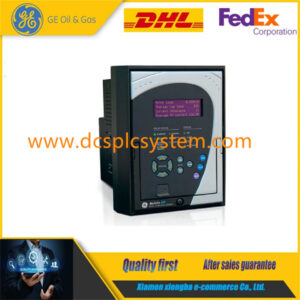Description
216NG62A HESG441634R1K HESG216876 serves as the central control unit, equipped with configuration software and a large screen real-time monitoring interface. It realizes dynamic display, data modification, fault diagnosis, automatic alarm of each control point, and can also display historical event records, accumulated running time of major components of the system, process flow diagrams of each device, and structural diagrams of each device.
1. Serial communication is used for data exchange between the central control unit and the lower computer PLC. Typically, 485 twisted pair communication is used for distances within 1000m. Fiber optic communication can be used for longer distances, and wireless communication can also be used for longer distances. The lower computer is controlled by PLC. According to the number and range of control objects, one or more PLCs can be selected for control. Data exchange between PLCs is achieved through internal link registers to achieve data exchange and sharing. Due to the high reliability of 216NG62A HESG441634R1K HESG216876 for real-time on-site monitoring, as well as its simple and flexible programming, it has been increasingly valued by people.
A three-level fault display alarm system was designed in 216NG62A HESG441634R1K HESG216876. The first level is set on the control panel of each control cabinet on the control site, and indicator lights are used to indicate the normal operation and fault situation of the equipment. When the equipment is running normally, the corresponding indicator lights are on. When the equipment is running with a fault, the indicator lights flash at a frequency of 1Hz. To prevent the indicator light bulb from being damaged and not accurately reflecting the equipment’s working condition, a fault reset/light test button has been specially set up. If the system runs for any time and the button is continuously pressed for 3 seconds, all indicator lights should be on. If there is an indicator that does not light up at this time, it indicates that the indicator light is damaged and should be replaced immediately. After resetting the button, the indicator light will still display the equipment’s working status in its original working state. The level 2 fault display is set on the large screen monitor in the central control room. When the equipment malfunctions, there is a text display of the fault type, and the corresponding equipment on the process flow chart flashes. The fault will be recorded in the historical event table. The level 3 fault display is set in the signal box of the central control room. When the equipment malfunctions, the signal box will use sound and light alarms to alert the staff and promptly handle the fault. When dealing with faults, they are also classified. Some faults require the system to stop running, but some faults have little impact on the system’s operation. The system can operate with faults, and faults can be eliminated during operation. This greatly reduces the downtime of 216NG62A HESG441634R1K HESG216876 and improves the reliability of the system’s operation level










